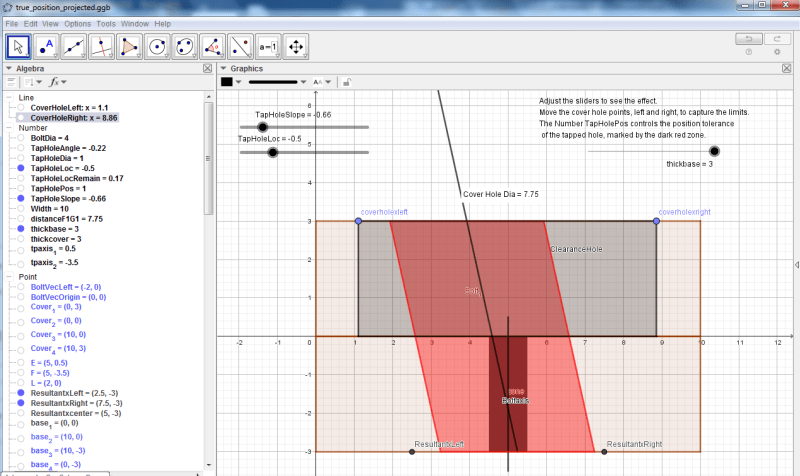-
1
- #1
3DDave
Aerospace
- May 23, 2013
- 11,247
Attached is an interactive demo of the fixed fastener case in Geogebra format. It has slide controls for the thickness of the tapped plate/hole depth, the percentage of the position tolerance that can be used for orientation, and the percentage of the location that remains given the amount of orientation. When the maximum is taken by orientation variation, none remains for location variation.
It plays by the Y14.5 rules, which don't take into account trigonometry, so it slightly under reports the effects of orientation variation. The name is a bit wrong as it doesn't deal with projected tolerances, but it was created to show the results of not using them.
I left creating the mating hole diameter to the user so that they could see how changes in the hole depth would affect the required hole size and, not dealt with here, the position tolerance of that hole in the mating part.

It also shows that position tolerances on holes in sheet metal should, theoretically, always have extremely small perpendicularity tolerances as well in order to gain the full benefit.
